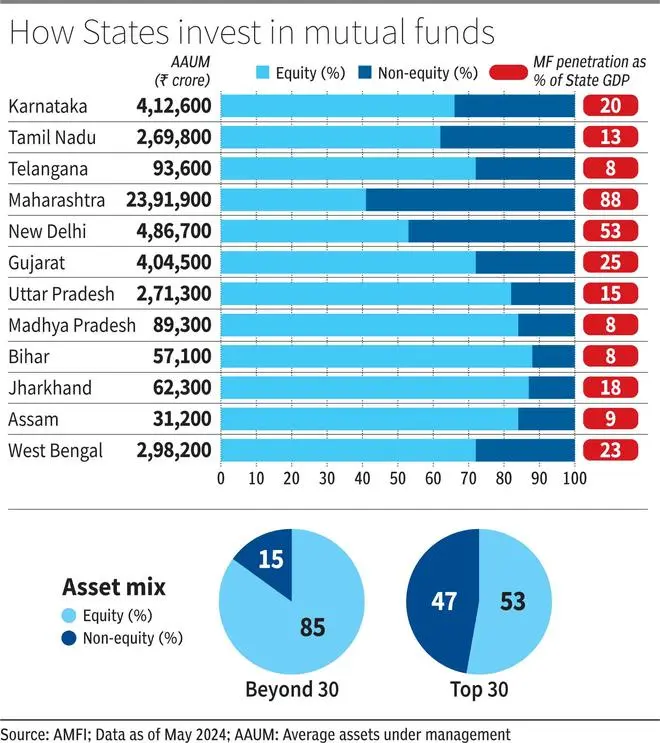For a country as diverse as India, even investor preferences aren’t similar across all zones. Data from industry body AMFI (Association of Mutual Funds in India) indicates that investor preferences for equity and non-equity (debt, gold, etc.) schemes vary significantly across different regions.
Southern states such as Karnataka, Tamil Nadu and Telangana prefer relatively lower equity allocations, going by the data on the split of average assets under management (AAUM) between equity and non-equity investments. This mix is seen even in the western state of Gujarat and the eastern State of West Bengal.
However, investors in North Indian States such as Uttar Pradesh, Madhya Pradesh, Bihar, and Jharkhand prefer a higher equity proportion in the mix.

Maharashtra (dominated by Mumbai) and New Delhi prefer a near-equal mix of equity and non-equity schemes in their portfolios.
The North-eastern region State of Assam again prefers larger doses of equities and relatively lower non-equity schemes.
From a broader pan-Indian perspective, this diversity ties in with the fact that B30 (beyond the top 30) cities have a far more aggressive appetite for equities than T30, or the top 30 cities.
The lower level of penetration explains why there is greater interest in equities in the Northern States, apart from just rallying markets.
Understanding varying preferences
Uttar Pradesh, Madhya Pradesh, Bihar, and Jharkhand investors have 82-88 per cent of their investments in equity schemes and 12-18 per cent in other non-equity funds.
Given the preponderance of tier 2 and tier 3 cities in these states, it is understandable that equity investments are higher, as equity funds are usually the first choices for investors.
B30 cities have an 85:15 equity-to-non-equity scheme ratio, whereas for T30, the figure is 53:47. Also, with a low asset base, the mutual fund penetration in these states is low, at around 8-18 per cent. Besides, B30 states tend to be dominated by individual investors who prefer equity funds, with only a tiny portion (less than 5 per cent) coming from institutions.
Karnataka investors have an aggressive hybrid category-like 66:34 allocation (equity to non-equity) ratio, while Tamil Nadu has a proportion of 62:38 (despite having a reasonably high asset base, mutual fund penetration is still relatively low at 13 per cent). Telangana investors are a tad more equity-oriented, at 72:28.
In the eastern states, West Bengal (72:28; on a higher asset base), appeared more conservative than Assam’s investors at 84:16.
Among the two largest AUM-generating States — Maharashtra and New Delhi — Maharashtra has a 41:59 equity-to-non-equity investment ratio by AUM. Given that Mumbai hosts most of the institutional investors in the country, this may not be surprising. Institutional investors are mostly into debt mutual funds for their Treasury operations, skewing the investment proportion. The state has an 88 per cent penetration level, the highest in the country.
- Also read: Three key MF inflow trends in May 2024
New Delhi has a 53:47 equity-to-non-equity investment proportion and a penetration level of 53 per cent.
In general, as the asset base grows, the proportion of equity investment in the state has tended to reduce.




Comments
Comments have to be in English, and in full sentences. They cannot be abusive or personal. Please abide by our community guidelines for posting your comments.
We have migrated to a new commenting platform. If you are already a registered user of TheHindu Businessline and logged in, you may continue to engage with our articles. If you do not have an account please register and login to post comments. Users can access their older comments by logging into their accounts on Vuukle.